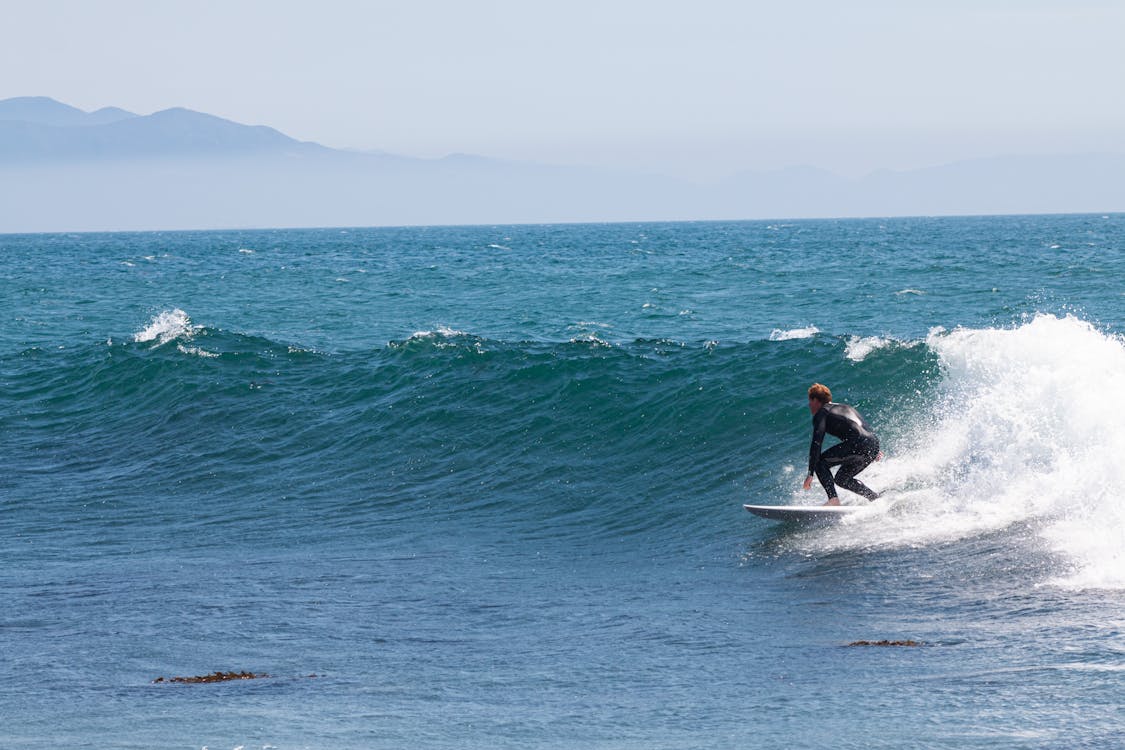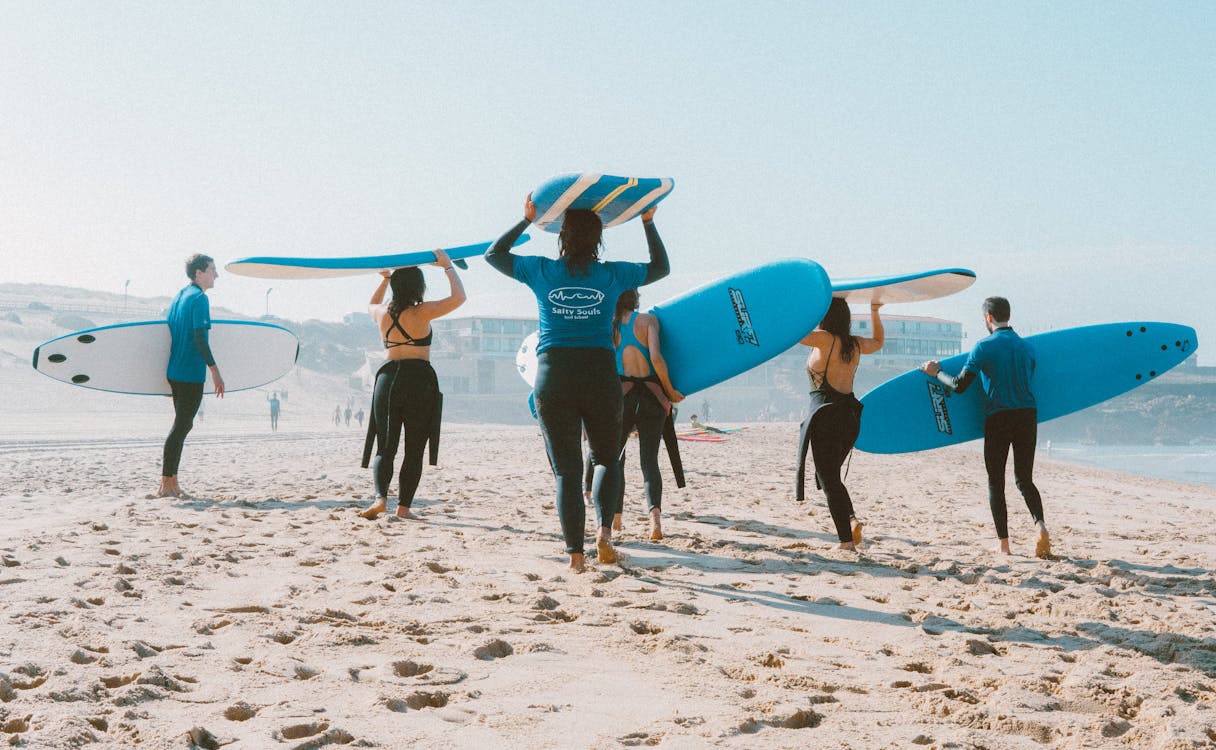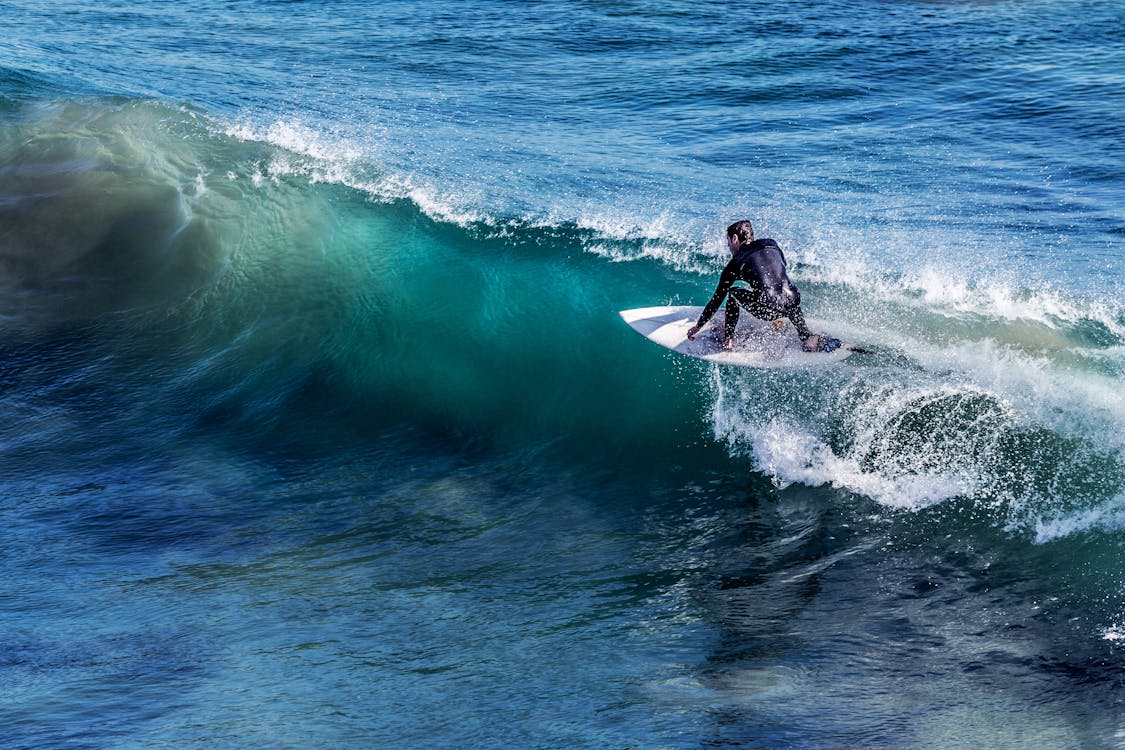Nosediving when surfing? Don’t move further back on your board


What causes nosediving?
Logically you would think that being too far forward on your surfboard causes it. And many tips online will tell you to move your body further back on your surfboard.
While being too far forward can definitely be a cause, it is actually very rare that beginners and novices lie too far forward on a regular basis. If you lie too far forward on a surfboard you will know it straight away, the nose will go under immediately and you won’t even be able to paddle at all, let alone catch a wave. You will likely self correct.
But being too far back is real common. Most novices who come for a lesson after already surfing a while on their own, will lie way too far back. When they paddle for waves the nose sticks up and they are unable to get their surfboard ‘planing’ down the slope of the wave.
What this means is they can’t get into waves early, so they need to rely on a much steeper wave face to pick them up. They basically have to go for waves that are already breaking and let the waves catch them, rather than them catching the wave.
So this is a major cause of nosediving, catching the wave when it’s already too late. The force of the wave is pushing the nose straight down.
The fix
So if you think that could be you, adjust your body position so that your board is flat in the water without the nose angling upward at all. Just the board’s rocker should be curving up.
Then paddle – you will probably need to arch your back more than you are used to, so that you can lift your chest off the board and keep the nose up. Also make sure your knees and ankles are close together too. Novices often splay their legs out either side which also contributes to nosediving.
It should feel easier to paddle faster because you are no longer ploughing water! But you may find you can’t yet hold that good paddle position for long periods and your lower back muscles fatigue. It just takes time and you’ll find it becomes 2nd nature.
So paddle normally like that and then when a wave lifts up under your tail, you will have 2 scenarios. To decide which scenario it is you’ll 100% need to get in the habit of looking behind you regularly, watching the wave as it approaches. This will help you get the timing right too. (if it’s awkward for you to look back, try following your hand back behind you with your eyes as you make a paddle stroke)
Scenario 1.
If the wave is kind of steep (I know that is vague but with time your wave reading will improve and you’ll fully understand), you’ll just continue paddling down the wave and as the wave lifts your tail up, the nose will start to drop easily. Don’t freak out, just keep paddling and possibly lift your head and chest a bit more to keep the nose up above the surface, until you feel the glide of the board taking off down the face. Then stand.
Scenario 2.
If the wave isn’t steep at all, you’ll have to use your body position to tilt the nose down, otherwise you won’t catch it. The way you do it is go from your normal paddle position to one where you push your chest down in to the surfboard as you also lift your tailbone and your feet to the sky. This shifts all your weight up towards the nose off the board. Keep paddling hard until the board planes it’s way down the face. Stand up.
Scenario 2 is great because you get in super early and the drop often isn’t difficult at all as the wave is yet to steepen. But this method simply doesn’t work if you are even lying a fraction too far back.
The benefit of a bigger board is you can catch waves crazy early, but you need that scenario 2 paddling style to take advantage of the size, because if you take off late, that size then becomes a major liability!
Other causes of nosediving
Whilst the above is definitely the most common cause I have observed, there are other things to check off that you might also be doing.
Stopping paddling as your tail lifts and grabbing your rails – This has the effect of slamming your breaks on in an old car, the nose goes down. It’s often a fear reaction to that tail lifting and nose dropping sensation, but it actually creates the situation you are trying to avoid. So instead, paddle through that fear until the surfboard starts to glide.
Surface Chop making nose go under – Don’t freak out if the nose goes underneath some surface chop. As long as you keep paddling and maintain your posture it will plough through it and come back above water. But if you stop paddling and grab the rails as above, down you will go.
Taking off too straight on a steep wave – As you improve you will get more comfortable and skillful at taking off on steeper waves. But with steep drops there comes a point where you cannot get away with taking off straight towards the beach. You will get air under your board and the nose will go under when you reach the bottom of the drop. By contrast, it is absolutely fine to take off straight on a mellower, spilling wave. So, when you start attempting steeper drops, you need to take off on a slight angle and tilt your board on your rail to cut across the drop. Think of it like skateboarding across a steep hill rather than bombing it straight down. The key part is to lean in to your inside rail (the one closest to the wave face when you are paddling on an angle) and bury it in the wall during your last few paddles. In fact you often still need to paddle quite straight and just look sideways ‘down the line’ of the wave and tilt the board at the last second. A common error is paddling sideways without burying the rail. You will know you’ve done that if the wave picks you up and rolls you and your board over.
Waiting too long to stand up – You need to get up at the top of the wave as soon as you feel the surfboard start to glide downward. If you wait and start taking the drop lying down, there is a good chance you will nose dive when you reach the bottom. Even if you don’t it is hard to get to your feet at the bottom anyway.
That’s all the reasons I can think of at the moment, if you’ve got any others let me know in the comments.
So number one thing, have a play around with your paddle position on the board first, expect a few nosedives as you feel out the timing and technique, but each time you nosedive ask yourself how steep was the wave? If it was steep then resist the urge to move back on your board again, just stay forward and keep working on paddling in to the wave earlier.
With practice your wave reading and timing will get better and better, as long as you are looking behind you as you paddle, so make that a habit too!






Responses